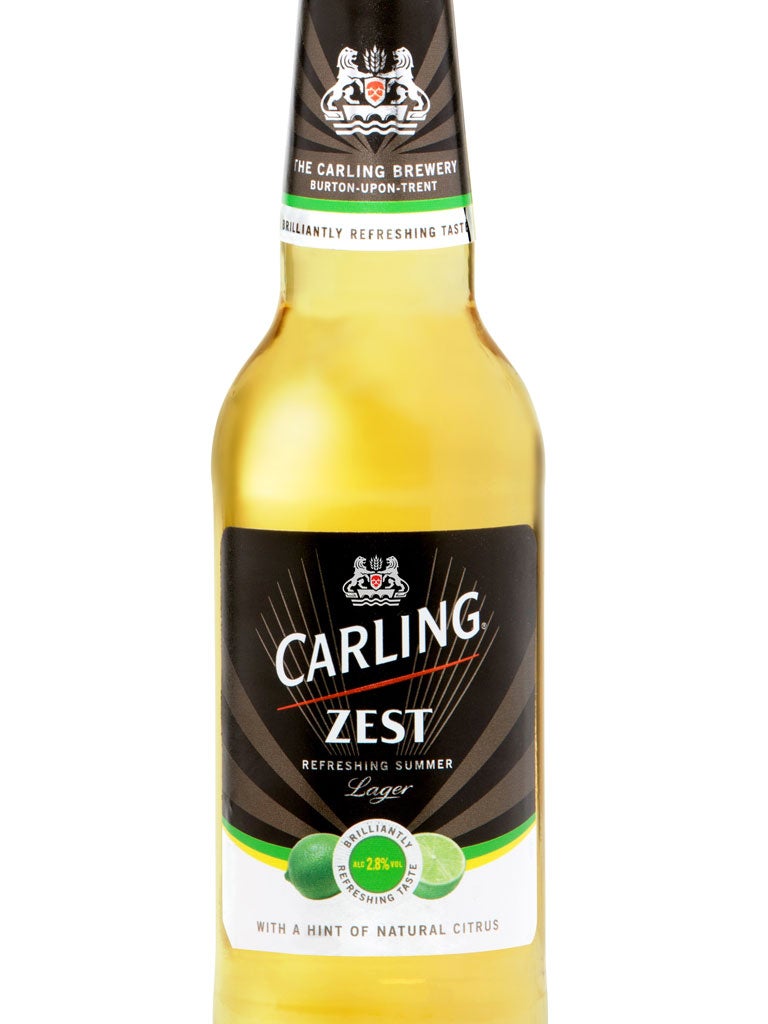Low-alcohol beers show their true calibre
Forget the watered-down stuff of the Eighties, today's 'small' brews taste as good as the real thing

Low-alcohol beer – long shunned for tasting worse than slops, and with no pleasurable after-effects – is becoming increasingly popular with the health conscious.
Sales are up more than 40 per cent nationwide over the last year and supermarkets are rushing to stock more varieties, encouraged by tax breaks on beers containing 2.8 per cent alcohol or less. What's more, new low-booze beer tastes just as good as some beers with more alcohol, according to recent tests by the Campaign for Real Ale.
Neil Williams, spokesman for the British Beer and Pub Association, said brewers hope these beers will attract female drinkers and appeal to the health conscious: "Lower-alcohol beers appeal to those concerned about calorie intake, as half a pint of lower-strength beer will contain approximately 60 calories." By comparison, a standard strength lager has more than 100 calories. Beer also contains silicon, which protects against the bone-thinning disease osteoporosis, he added.
Brewers have been encouraged to launch low-alcohol beers since the introduction last October of a tax break of 50 per cent on beer containing 2.8 per cent alcohol or less – a tax saving of 35 pence a pint compared with 4.2 per cent beer. Carlsberg's Skol has dropped from 3 per cent to 2.8 per cent, to take advantage of the tax break, while Carling Zest, also at 2.8 per cent, hit supermarket shelves a fortnight ago. Guinness Mid, Tolly English Ale, Heracles, Sweet Sussex Stout and Marston's Pale Ale have all been launched since the autumn.
Liz Wright, spokesperson for Hop Back Brewery, which makes Heracles beer, said: "It is doing exceptionally well, and we have introduced it in more than 100 pubs since October."
Tesco, which sold 15 million bottles of non-alcoholic and low-alcohol beer last year, and is predicting a 15 per cent rise this year, has added 11 beers of 2.8 per cent or lower strength to their range.
The company's beer buyer, Chiara Nesbitt, said: "More and more drinkers are prepared to buy lower-alcohol beers as long as the quality is good. The growth, particularly for non-alcohol beers, is remarkable, as they were previously frowned upon by drinkers who considered them thin and tasteless compared to the real thing."
Sainsbury's beer buyer, Nicky Millington, said: "If sales continue to increase, we'll be on the lookout for more lower-alcohol beers to satisfy customer demand."
Rupert Ponsonby, founder of the Beer Academy, said: "This category appeals to everyone, men and women, people who do not drink at lunchtime but would like to, and those who have cut back on their drinking." He predicts that Britain will soon catch up with countries such as Australia, where 10 per cent of the market is for beer at two per cent alcohol or below.
But Melissa Cole, author of Let Me Tell You About Beer, said: "You are always going to get more flavour from higher-alcohol beers, because you have to put more raw ingredients in to get more alcohol out, and malt provides a lot of that flavour. There's also a viscosity to alcohol, so the mouth-feel is different. But some brewers are making extremely refreshing lower-alcohol beers."
How small beers grew up
For those who crave a beer, but don't want the alcohol, low-booze versions used to be a bitter disappointment.
"Small" beers – low and no-alcohol brews – were often watered-down full-strength varieties, or had the alcohol extracted from them ... along with the taste. Who can forget Kaliber, launched in 1986, with its trademark stale taste, dismissed by Which? as "bitter and unrefreshing".
Follow-ups included Hemeling, advertised by the late English football captain Emlyn Hughes, with the tag line – answered only in the negative – "Wouldn't you rather be Hemeling?". As the low-alcohol beer market contracted by a third in the 1990s, to £38m, it seemed the brews had no future.
But new brewing methods mean no more dilution or alcohol extraction: the beers are brewed like any others, but with less malt, leading to less sugar and thus less alcohol.
Join our commenting forum
Join thought-provoking conversations, follow other Independent readers and see their replies
Comments